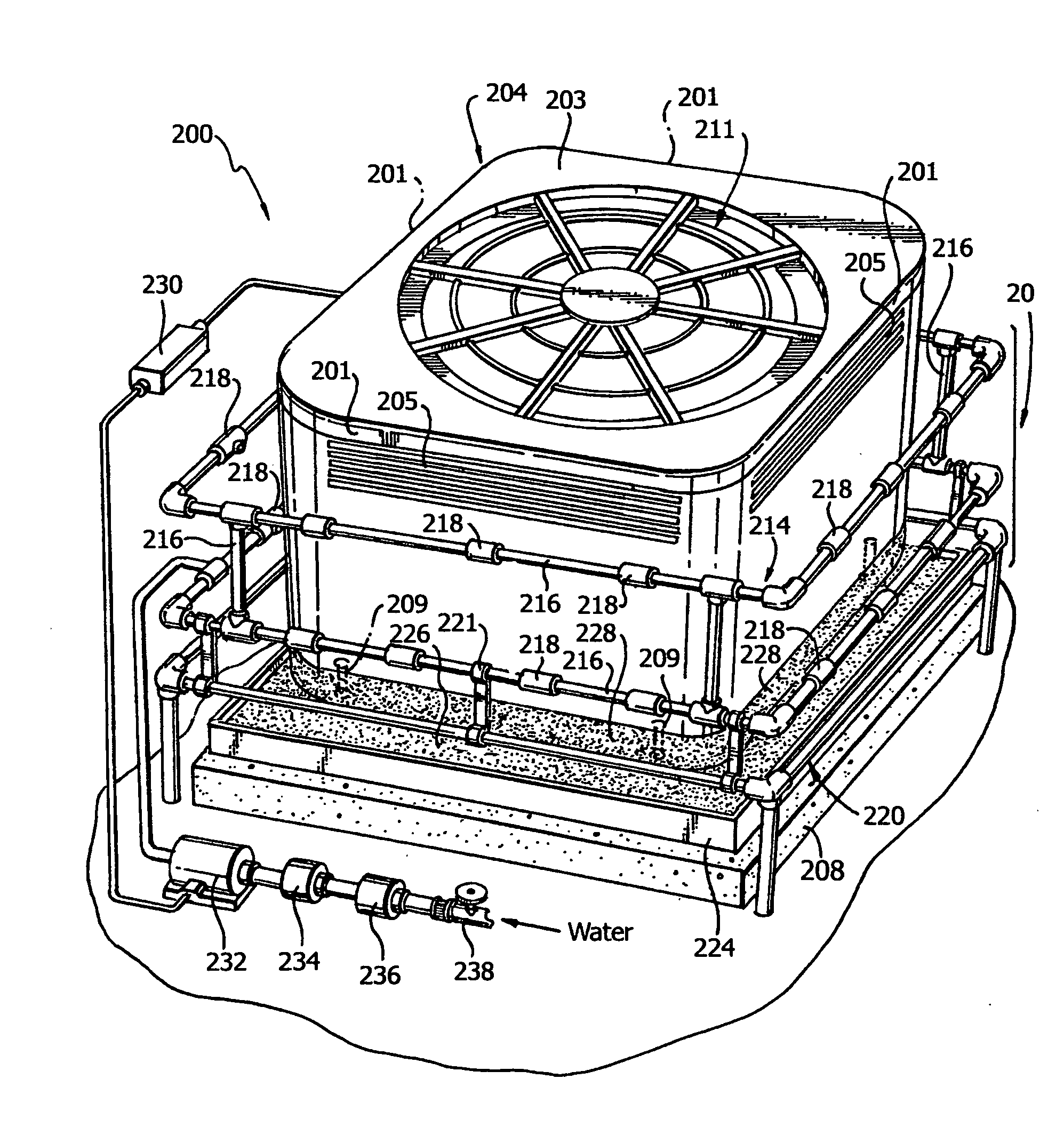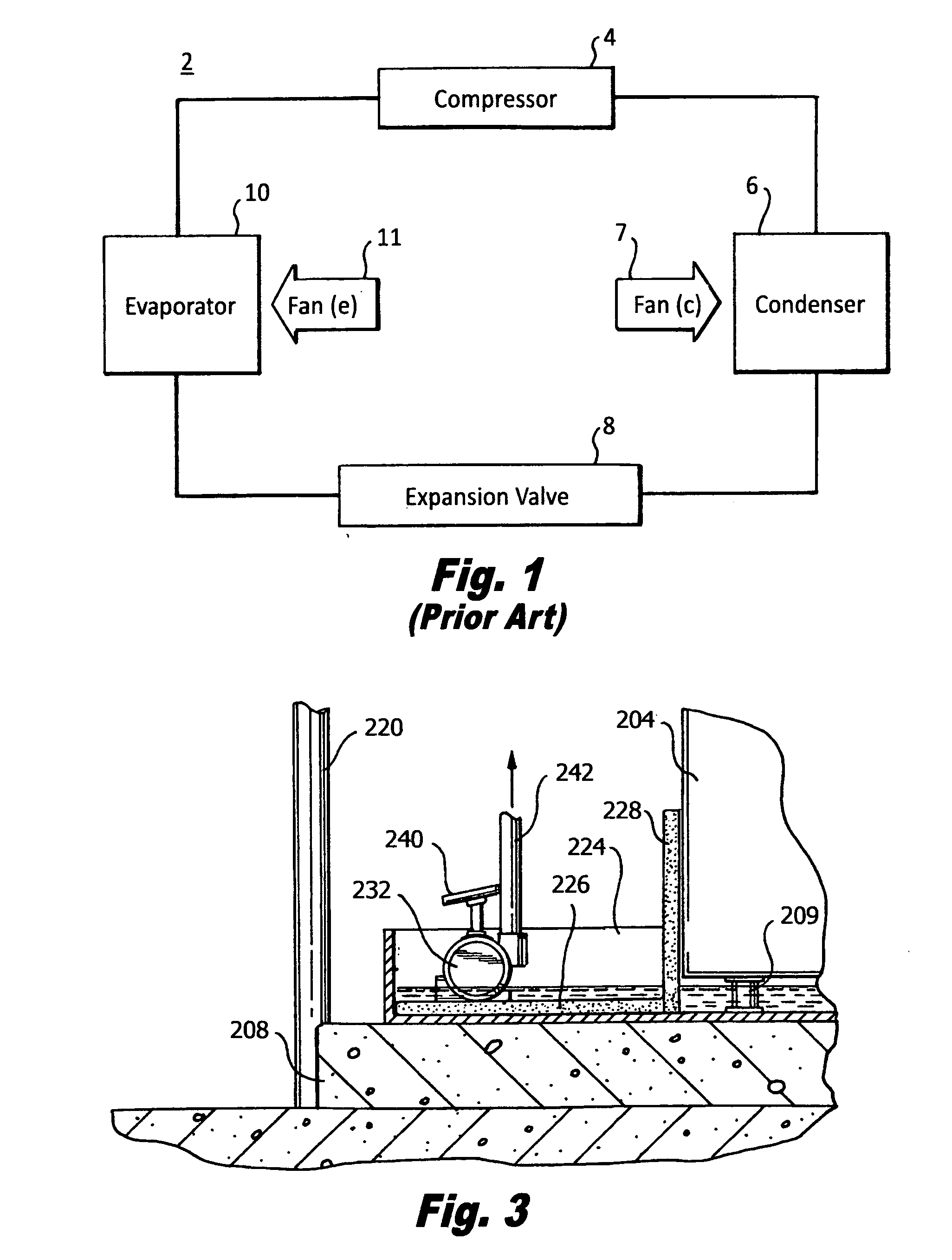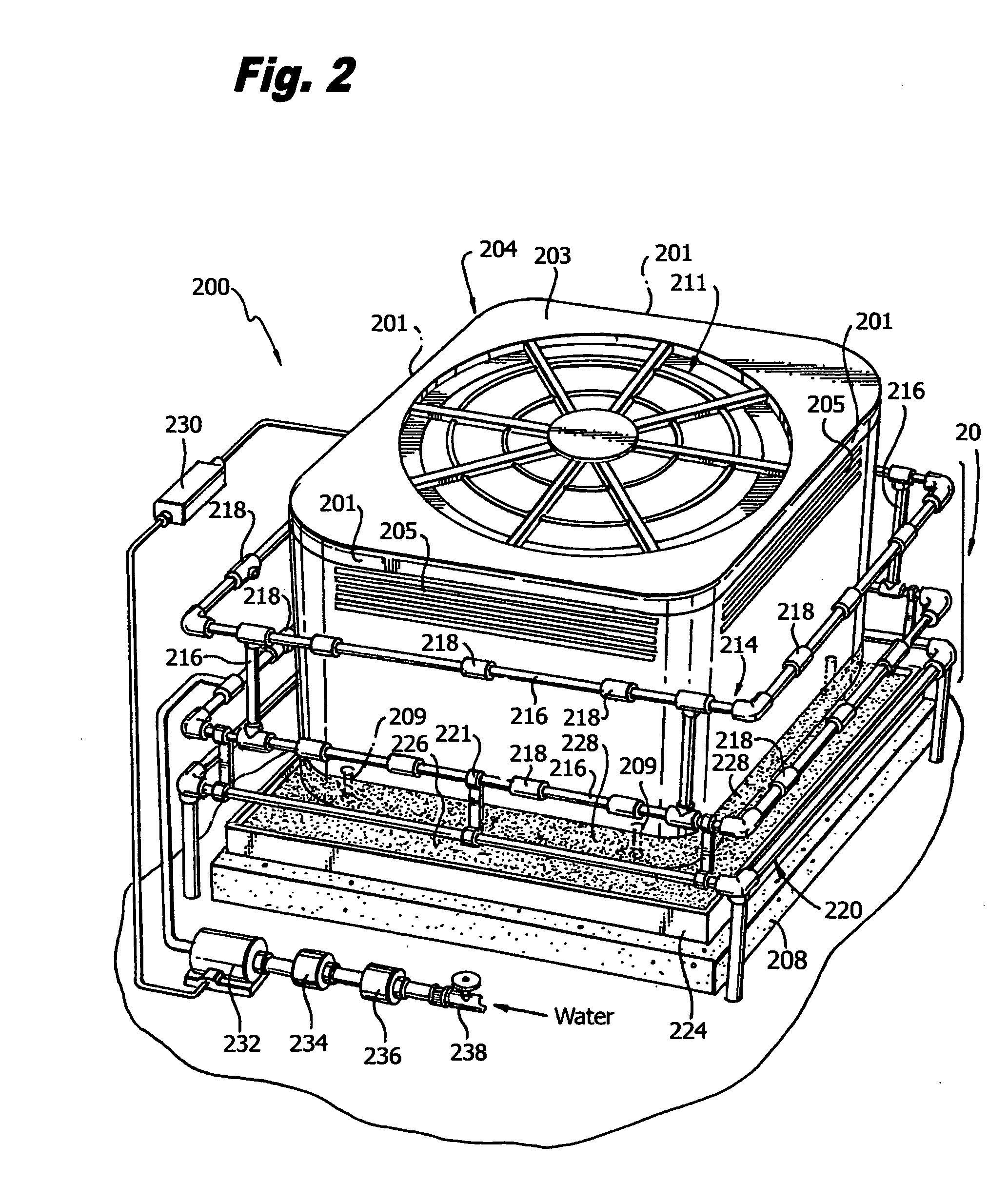Air conditioner system with optimizer
a technology of optimizing and air conditioner, which is applied in the direction of fluid pressure control, static/dynamic balance measurement, instruments, etc., can solve the problems of increasing the current draw of the compressor, the operating temperature of the compressor is generally increased, and the operating temperature of the ambient environment is generally increased, so as to achieve the most efficient and strongest operation. , no added energy cost, energy saving
- Summary
- Abstract
- Description
- Claims
- Application Information
AI Technical Summary
Benefits of technology
Problems solved by technology
Method used
Image
Examples
Embodiment Construction
[0020]An air conditioning system with optimizer that provides enhanced water cooling of intake air utilized to cool a compressor / condenser is described and set forth herein for the purpose of conveying broad inventive concepts of the system operation. The drawings and descriptions provided are not meant to limit the scope and spirit of the invention in any way.
[0021]The air conditioning system with optimizer cools the compressor with water, and collects and reapplies collected once used water and reapplies same in a secondary evaporative cooling cycle using normal fan operation. The compressor or compressor housing fan sucks air, the sucking air capturing water and water vapor first applied by the optimizer's primary water cooling system in a secondary optimizer evaporative cooling cycle. The secondary evaporative cooling system provides a collecting structure, such as a pan, in which the evaporative cooling elements extend, preferably covering all of the pan surface area. Preferabl...
PUM
 Login to View More
Login to View More Abstract
Description
Claims
Application Information
 Login to View More
Login to View More - R&D
- Intellectual Property
- Life Sciences
- Materials
- Tech Scout
- Unparalleled Data Quality
- Higher Quality Content
- 60% Fewer Hallucinations
Browse by: Latest US Patents, China's latest patents, Technical Efficacy Thesaurus, Application Domain, Technology Topic, Popular Technical Reports.
© 2025 PatSnap. All rights reserved.Legal|Privacy policy|Modern Slavery Act Transparency Statement|Sitemap|About US| Contact US: help@patsnap.com



